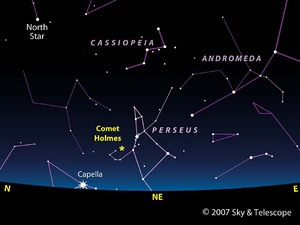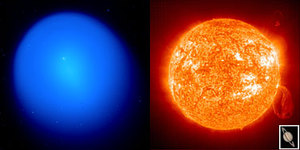OF THE
TIMES

|
| ©Sky and Telescope |

|
| ©University of Hawaii |
| A comparison of Comet Holmes, the sun and Saturn (inset) is shown in this image from the University of Hawaii. |

|
| ©Pic du Midi Observatory/Francois Colas/Jean Lecacheux/Boris Baillard |
| Holmes |
Comment: The fact that large scale cometary impacts have happened so relatively recently, and seem to happen in cycles, and are getting so much attention lately, makes one wonder if Something Wicked This Way Comes. Stronger telescopes or more asteroids and comets?
And what would cause these cycles? The paper can be read here. Figures and tables are here.